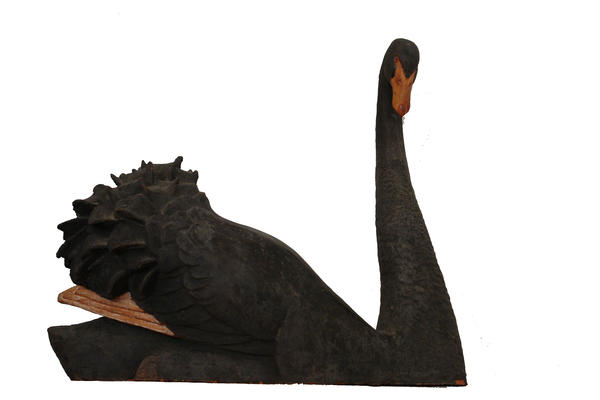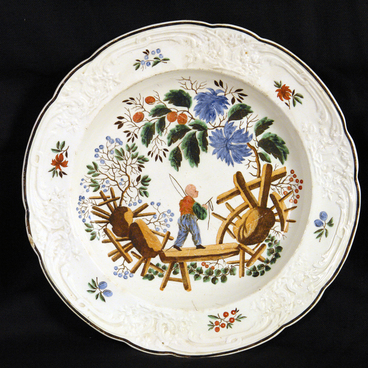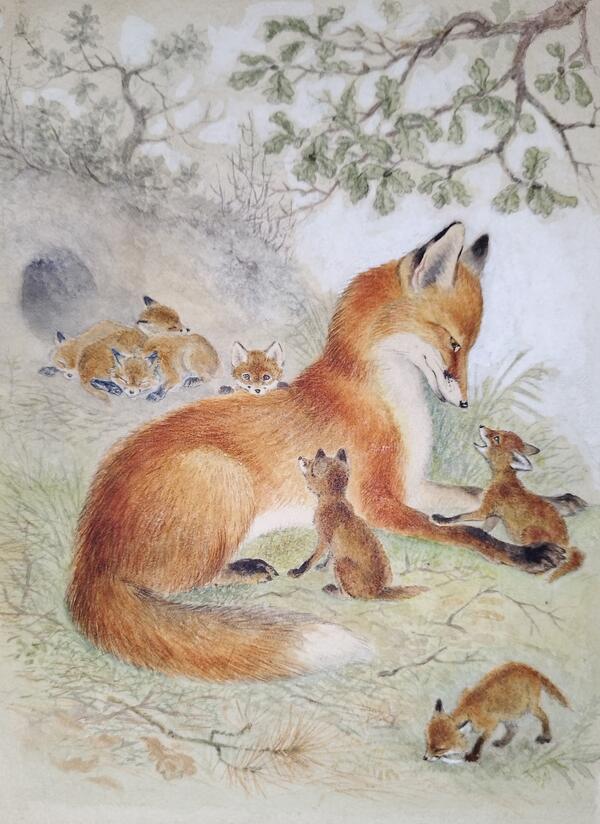The list of works by domestic animal painters in the Tarusa art Gallery is also represented by the works of Dmitry Gorlov (1899–1988), the grandson of the geological engineer Pyotr Gorlov. Although from childhood he depicted animals with enthusiasm and talent, only in 1921, after studying at the Petrovsko-Razumov Agricultural Academy and at the natural department of Moscow State University, he entered VKHUTEMAS (‘Higher Art and Technical Studios’).
He was an assistant to the graphic artist and animal sculptor Vasily Vatagin (1883-1969) at the Darwin Museum. Later, becoming friends, the artists illustrated several books in Detgiz (‘Children’s Literature’ publishing house) and created a sculptural group over the new entrance to the Moscow Zoo. There the artist made sketches from nature for his sculptures and illustrations.
Nevertheless, he gained worldwide fame as a porcelain sculptor. In 1958 he received a gold medal at the World Exhibition in Brussels for the statuettes “The Donkey”, “The Zebra”, “The Giraffe”, “The Zubrobizon”. By that time, he moved to the Dmitrov Porcelain Factory after working as a chief artist at the Gzhel Ceramic Factory. He devoted these years to the active development of the use of ceramics. Porcelain small plastic, bas-reliefs, terracotta figurines, panels, tiles were made from it.
His later sculptures include the 1980 “The Black Swan”, which is kept in the Tarusa Art Gallery. As a material, the artist chose chamotte — refractory clay, fired to the point of losing its plasticity, which began to be actively used in decorative art in the middle of the 20th century.
An observant draftsman and sculptor, Gorlov easily reproduced the silhouette and pose of a waterfowl. He managed to reliably convey both the volume of the magnificent plumage and the bend of the swan’s neck. Black was used as the primary colors for the bird and orange for the eyes, beak and paws. Unlike the author’s pretty porcelain sculptures, visually echoing his illustrations for children’s books, this figure of a black swan seems absolutely realistic.
He was an assistant to the graphic artist and animal sculptor Vasily Vatagin (1883-1969) at the Darwin Museum. Later, becoming friends, the artists illustrated several books in Detgiz (‘Children’s Literature’ publishing house) and created a sculptural group over the new entrance to the Moscow Zoo. There the artist made sketches from nature for his sculptures and illustrations.
Nevertheless, he gained worldwide fame as a porcelain sculptor. In 1958 he received a gold medal at the World Exhibition in Brussels for the statuettes “The Donkey”, “The Zebra”, “The Giraffe”, “The Zubrobizon”. By that time, he moved to the Dmitrov Porcelain Factory after working as a chief artist at the Gzhel Ceramic Factory. He devoted these years to the active development of the use of ceramics. Porcelain small plastic, bas-reliefs, terracotta figurines, panels, tiles were made from it.
His later sculptures include the 1980 “The Black Swan”, which is kept in the Tarusa Art Gallery. As a material, the artist chose chamotte — refractory clay, fired to the point of losing its plasticity, which began to be actively used in decorative art in the middle of the 20th century.
An observant draftsman and sculptor, Gorlov easily reproduced the silhouette and pose of a waterfowl. He managed to reliably convey both the volume of the magnificent plumage and the bend of the swan’s neck. Black was used as the primary colors for the bird and orange for the eyes, beak and paws. Unlike the author’s pretty porcelain sculptures, visually echoing his illustrations for children’s books, this figure of a black swan seems absolutely realistic.




